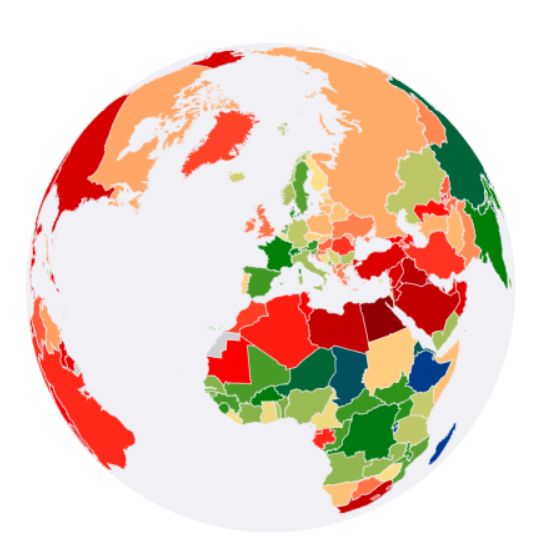[vc_row][vc_column][vc_column_text]New research from the European Society of Cardiology (ESC) to help predict the risk of cardiovascular disease (CVD), especially heart attack and stroke, and hence to help reduce the burden of these diseases, has been published today in the European Heart Journal.1,2[/vc_column_text][vc_column_text]The research – carried out by the SCORE2 and SCORE2-Older Person (OP) working groups† together with the ESC Cardiovascular Risk Collaboration‡ – analysed data from more than 700,000 middle- and older-aged participants in several population-based studies, to develop risk prediction models (SCORE2 and SCORE2-OP) tailored for implementation in European countries. The participants did not have previous history of CVD at the outset and altogether there were more than 30,000 CVD events (heart attack or stroke) recorded during follow up.[/vc_column_text][vc_column_text]These risk models were then adapted or ‘recalibrated’ to more accurately estimate CVD risk for contemporary populations in low-, medium-, high- and very high-risk regions of Europe, using CVD incidence rates derived from population-based registries involving several million individuals across Europe and expected risk factor levels.[/vc_column_text][vc_column_text]These risk models were then adapted or ‘recalibrated’ to more accurately estimate CVD risk for contemporary populations in low-, medium-, high- and very high-risk regions of Europe, using CVD incidence rates derived from population-based registries involving several million individuals across Europe and expected risk factor levels.[/vc_column_text][vc_column_text]SCORE2 and SCORE2-OP will be adopted by the upcoming European Guidelines on CVD Prevention in Clinical Practice.[/vc_column_text][/vc_column][/vc_row][vc_row top_margin=”page_margin_top_section”][vc_column][vc_column_text]Professor Emanuele Di Angelantonio, from the University of Cambridge, one of the senior authors of the studies and co-Chair of the ESC Cardiovascular Risk Collaboration, said:
“This highly collaborative effort was developed using data from dozens of countries, including exceptionally powerful, extensive and complementary datasets of contemporary relevance to European populations. As the new risk prediction algorithms are superior to their predecessors, they should have substantial real-world impact by improving the primary prevention of cardiovascular disease across Europe through enhancing the accuracy, generalisability and validity of disease risk prediction.”
[/vc_column_text][/vc_column][/vc_row][vc_row top_margin=”page_margin_top_section”][vc_column][vc_column_text]Professor Frank Visseren, from the University Medical Centre in Utrecht, one of the senior authors of the studies said:
“These new risk prediction algorithms are essential for communicating the risk of CVD and assessing potential benefit from risk factor treatment and may facilitate shared decision-making and risk management in middle age and older persons”.
[/vc_column_text][/vc_column][/vc_row][vc_row top_margin=”page_margin_top_section”][vc_column][vc_column_text]Professors Panos Vardas and Adam Timmis from the European Heart Health Institute in Brussels said:
“CVDs are the number one cause of death in Europe and more people die annually from CVDs than from any other cause. Our research ensures that the new models are applicable to the circumstances of different European regions, and should enhance our efforts to prevent CVD in Europe and help to reduce premature mortality from non-communicable diseases.”
[/vc_column_text][/vc_column][/vc_row][vc_row top_margin=”page_margin_top_section”][vc_column][vc_column_text]Professor Ian Graham from Trinity College in Dublin and co-Chair of the ESC Cardiovascular Risk Collaboration said:
“The prevention of CVD depends upon being able to estimate risk and offer practical advice as to how it may be reduced. We hope that these new studies will assist in this.”
[/vc_column_text][/vc_column][/vc_row][vc_row top_margin=”page_margin_top_section”][vc_column][vc_column_text]Professor Cyrus Cooper, Director of the MRC Lifecourse Epidemiology Unit, University of Southampton, and a co-investigator of this study, said:
“These data form the basis of a robust risk prediction tool for coronary artery disease in Europe, in much the same way as the FRAX tool permits prediction of osteoporotic fracture. It is testimony to the extensive cohort collection painstakingly assembled by the study group.”
[/vc_column_text][/vc_column][/vc_row][vc_row top_margin=”page_margin_top_section”][vc_column][vc_single_image image=”5429″ img_size=”full” add_caption=”yes” alignment=”center”][/vc_column][/vc_row][vc_row top_margin=”page_margin_top_section”][vc_column][vc_column_text]‡The SCORE2 Working Group is a collaboration of academics that was convened to help develop tools for predicting CVD risk which could be used in Europe.
†The ESC Cardiovascular Risk Collaboration, situated in the ESC’s European Heart Health Institute in Brussels, is a collaboration of academics, policy makers and end users that was established by the ESC in 2019 to help develop tools for predicting CVD risk which could be used in Europe.
[1] Research paper: ‘SCORE2 risk prediction algorithms: revised models to estimate 10-year risk of cardiovascular disease in Europe’. European Heart Journal. Post-embargo link: https://academic.oup.com/eurheartj/article-lookup/doi/10.1093/eurheartj/ehab309 [Download]
[2] Research paper: ‘SCORE2-OP risk prediction algorithms: estimating incident cardiovascular event risk in older persons in four geographical risk regions’. Post-embargo link: https://academic.oup.com/eurheartj/article-lookup/doi/10.1093/eurheartj/ehab312[/vc_column_text][/vc_column][/vc_row]








